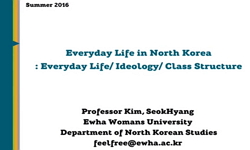Three economic marine algae that have been used as food and carrageenan sources were collected from Korea during a survey of marine algal flora. They share the generic features of Hypnea, and three major clades supported by the sectional features were...
http://chineseinput.net/에서 pinyin(병음)방식으로 중국어를 변환할 수 있습니다.
변환된 중국어를 복사하여 사용하시면 됩니다.
- 中文 을 입력하시려면 zhongwen을 입력하시고 space를누르시면됩니다.
- 北京 을 입력하시려면 beijing을 입력하시고 space를 누르시면 됩니다.
https://www.riss.kr/link?id=A106244074
- 저자
- 발행기관
- 학술지명
- 권호사항
-
발행연도
2018
-
작성언어
English
- 주제어
-
등재정보
SCOPUS,KCI등재
-
자료형태
학술저널
- 발행기관 URL
-
수록면
311-317(7쪽)
- 제공처
-
0
상세조회 -
0
다운로드
부가정보
다국어 초록 (Multilingual Abstract)
Three economic marine algae that have been used as food and carrageenan sources were collected from Korea during a survey of marine algal flora. They share the generic features of Hypnea, and three major clades supported by the sectional features were confirmed in a phylogenetic tree based on rbcL sequences. The first species, which belongs to a species group corresponding to the sect. Spinuligerae, nests in the same clade with Hypnea yamadae in a genetic distance of 0%. It is morphologically characterized by an entangled base, subcompressed or subterete to terete axes, somewhat percurrent main axis, irregularly alternately branching with wide angle, and rarely hooked spinous branchlets. The second one is also referred to the sect. Spinuligerae and formed the same clade as Hypnea cenomyce. The genetic distance between both sequences was calculated as 0.0-0.1%, which is considered to be intraspecific. This species is distinct by somewhat entangled thallus at the basal part, percurrent axis, short spine-like branchlets densely covering the axis, and medullary lenticular thickenings. The third alga, which forms a species group corresponding to the sect. Pulvinatae, nests in the same clade as Hypnea nidulans (no intraspecific divergence). It shows occasionally epiphytic habitat rather than epilithic habitat of low mat-forming growth and percurrent erect main axes with dense lateral branchlets. Based on these morphological and molecular data, the three Korean species are identified as H. yamadae, H. cenomyce, and H. nidulans. This is the first record of the Hypnea species in Korea.
동일학술지(권/호) 다른 논문
-
- The Korean Society of Fisheries and Aquatic Science
- Ortiz-Chura, Abimael
- 2018
- SCOPUS,KCI등재
-
- The Korean Society of Fisheries and Aquatic Science
- Aruho, Cassius
- 2018
- SCOPUS,KCI등재
-
- The Korean Society of Fisheries and Aquatic Science
- Shim, Kil Bo
- 2018
- SCOPUS,KCI등재







 ScienceON
ScienceON






